
Giuseppe Maria Crespi, nicknamed Lo Spagnuolo, was an Italian late Baroque painter of the Bolognese School. His eclectic output includes religious paintings and portraits, but he is now most famous for his genre paintings.

Giovanni Antonio Burrini was a Bolognese painter of Late-Baroque or Rococo style. After an apprenticeship with Domenico Maria Canuti, he went to work under Lorenzo Pasinelli with fellow student, Giovanni Gioseffo dal Sole. He became an early friend and often close collaborator with Giuseppe Maria Crespi, with whom he shared a studio. He became a rival and competitor with Sebastiano Ricci. He painted in Turin for the Carignano family and Novellara. In 1709, he was one of the founding members of the Accademia Clementina in Bologna.

Marcantonio Franceschini was an Italian painter of the Baroque period, active mostly in his native Bologna. He was the father and teacher of Giacomo Franceschini.

Domenico Maria Canuti was an Italian painter of the Baroque period, active mainly in Bologna and Rome. He was a major painter of fresco decorations. His ceiling decorations showed a mix of Bolognese and Roman influences.

Giovanni Gioseffo dal Sole was an Italian painter and engraver from Bologna, active in the late-Baroque period. Upon the death of Carlo Cignani, Gioseffo dal Sole became among the most prominent painters in Bologna, described as the Guido Moderno.
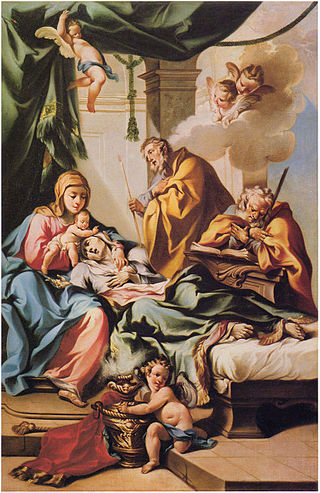
Francesco Monti was an Italian painter of the late Baroque.

Enrico Haffner was an Italian painter of quadratura during the Baroque period, active mainly in Bologna.
Giuseppe Antonio Caccioli was an Italian painter of the Baroque period.
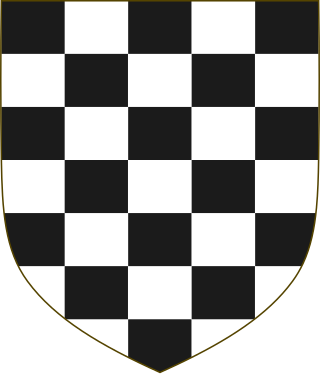
The Pepoli family was an Italian aristocratic banking family of Bologna, in northern Italy. They were lords of the city for thirteen years in the fourteenth century. A branch of the family moved to Trapani in Sicily and were granted several feudal lordships and baronies.
Giuseppe Antonio Torri was an Italian architect of the early 18th century. He was born and died in Bologna, where he was active in a late-Baroque style.

Filippo Pedrini was an Italian painter.
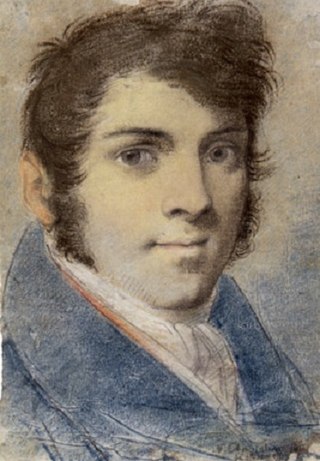
Napoleone Angiolini was an Italian painter.
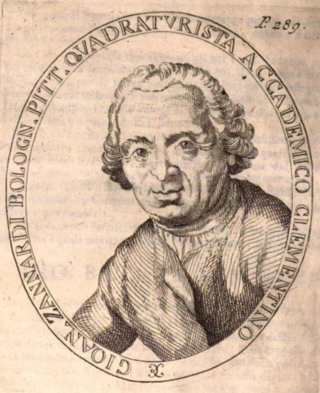
Giovanni Zanardi was an Italian painter of quadratura during the late Baroque period.
Bernardo Minozzi was an Italian painter, mainly of landscapes in a late Baroque style.
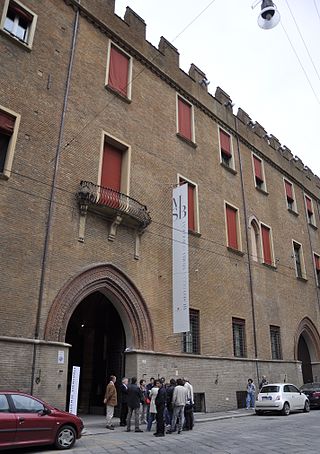
The Palazzo Pepoli Vecchio is a Medieval palace located on Via Castiglione number 8, in central Bologna, region of Emilia-Romagna, Italy. The merlonated brick Gothic-style building is now the civic Museum of the History of Bologna. It stands across the street from the Baroque-style Palazzo Pepoli Campogrande, now a civic art gallery.

The Palazzo di Residenza della Cassa di Risparmio di Bologna is a 19th-century palace, erected as Neo-Renaissance architecture, located on Via Farini #22, Bologna, region of Emilia-Romagna, Italy. It was built and is still the headquarter of the Cassa di Risparmio in Bologna.

The Palazzo Legnani Pizzardi, also known as Palazzo Pizzardi e Volta or just Palazzo Pizzardi, is a Renaissance style palace located on Via d'Azeglio #38, corner with Via Farini, in central Bologna, Italy. In 2015, the palace housed the Tribunal of Bologna.

The Palazzo Torfanini is a Renaissance architecture palace located on Via Galliera 4, in central Bologna. It is located near the Palazzo Aldrovandi. The palace, with typical facade arcades, was commissioned by Bartolomeo Torfanini in 1544.

The Palazzo Zambeccari at 11 Via Carbonesi is a Neoclassical urban palace in central Bologna, region of Emilia-Romagna, Italy. It is located diagonal to the facade of San Paolo Maggiore, and in 2015 was home to offices of the Banco Popular di Milano SCRL.

The Palazzo Malvezzi de' Medici is a Renaissance-style palace located on Via Zamboni #13 in central Bologna, Italy. The palace now houses the offices of the Provincial Administration.






















